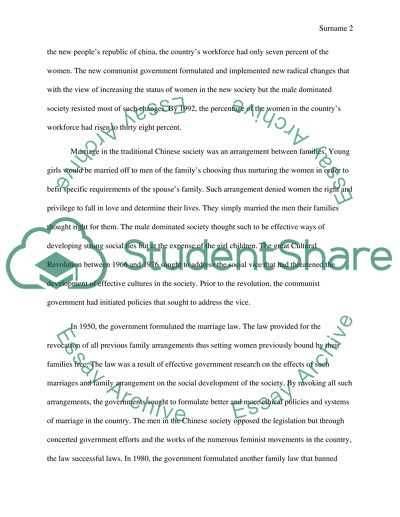Cite this document
(“The history and evolution of Chinese women' rights Research Paper”, n.d.)
Retrieved from https://studentshare.org/gender-sexual-studies/1492637-the-history-and-evolution-of-chinese-women-rights
Retrieved from https://studentshare.org/gender-sexual-studies/1492637-the-history-and-evolution-of-chinese-women-rights
(The History and Evolution of Chinese women' Rights Research Paper)
https://studentshare.org/gender-sexual-studies/1492637-the-history-and-evolution-of-chinese-women-rights.
https://studentshare.org/gender-sexual-studies/1492637-the-history-and-evolution-of-chinese-women-rights.
“The History and Evolution of Chinese women' Rights Research Paper”, n.d. https://studentshare.org/gender-sexual-studies/1492637-the-history-and-evolution-of-chinese-women-rights.


